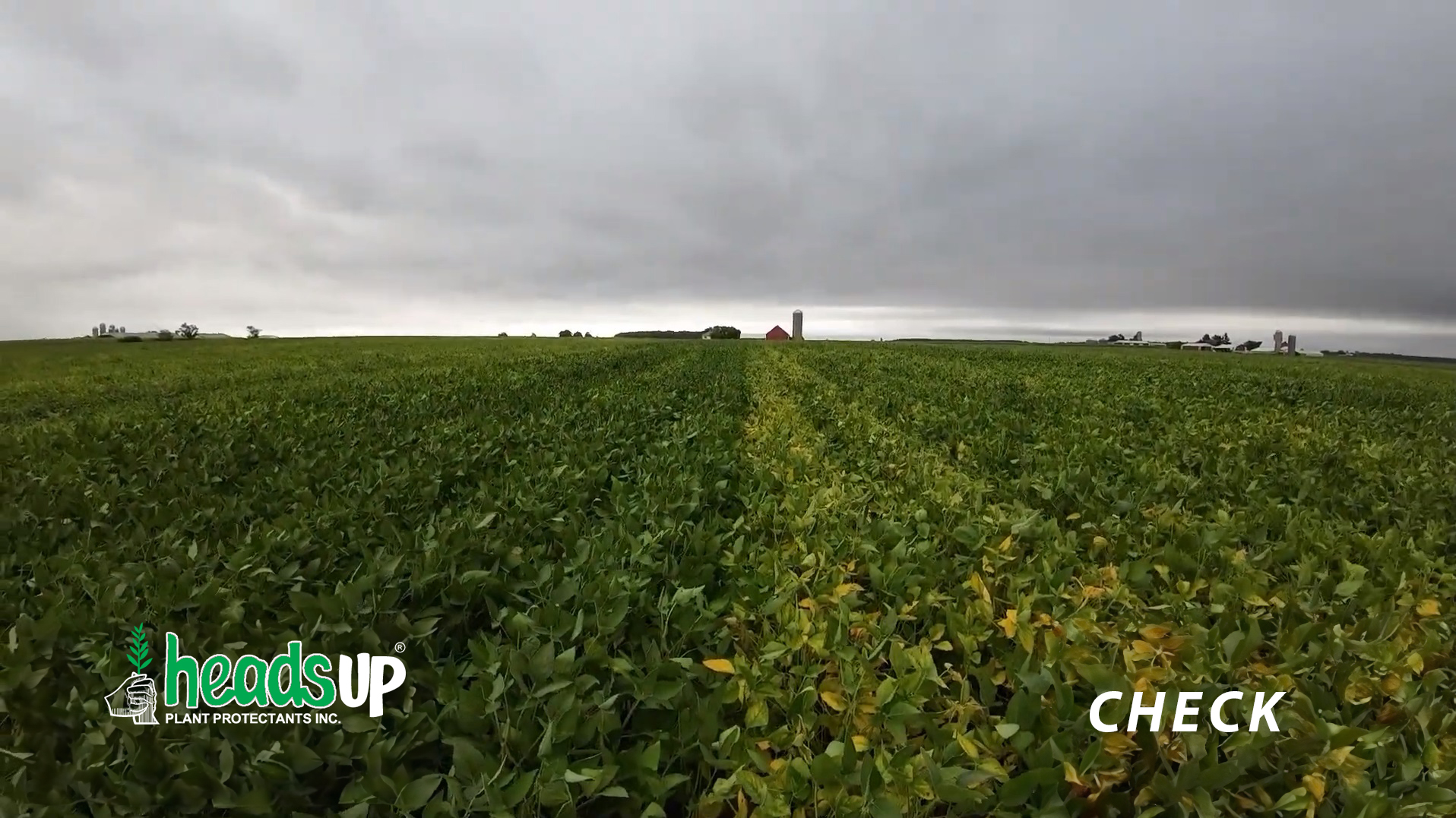Crop diseases are ever-present in your fields. Start combatting yield-robbing diseases like white mold and sudden death syndrome (SDS) now and in the future.
White mold — a crop disease caused by the fungus Sclerotinia sclerotiorum — has been burdensome for soybean growers since it became prevalent in the United States in the early 1990s. In addition, growers in the Red River Valley know SDS, which is caused by a soil-borne fungal pathogen (Fusarium virguliforme), all too well. The heavy, gummy soils in the region hold excess moisture, which can be a large factor in causing severe diseases like SDS and white mold. As cool, wet growing seasons become more common in the northern regions of the Midwest, growers in North Dakota must do what they can to protect their fields and control white mold and SDS outbreaks.
A widespread problem
White mold and SDS affects between 40 to 50 million acres in the north-central region of the United States. Yield losses can be as high as 50% in fields with severe infestation. The two diseases have been difficult to manage for many growers, especially in climates that encourage the diseases to proliferate.
Spring rainstorms are notorious for flooding acres. Chris Prochnow, a 10-year member of the Agassiz Seed & Supply team in West Fargo, North Dakota, notes, “Unfortunately, you can get diseases moving in the soil. Those soil particles are moved with water during the spring. Soil particles and spores can also be moved by tillage and harvest equipment, transferring the issue from field to field.” Prochnow deals with plenty of white mold in southeast North Dakota and northeast South Dakota, a hot spot for the disease. He also says that white mold is more prevalent in areas with cottonwood tree rows that stretch for up to 60 acres. Low air circulation and morning dew gives sclerotia the right environment for accelerated growth.
Irrigated soils can also exacerbate the issue. Mark Halvorson, a territory manager for Agassiz adds, “White mold is more prevalent in irrigated fields, and once spores are there, you can never get rid of them. In those areas, it’s very common for growers to use a seed treatment; it’s not even a question.”
Another troubling factor — sclerotia can survive for long periods of time in the soil, sometimes up to seven or 10 years.
Getting a head start
Disease pressure is only getting more common in North Dakota. If growers don’t tackle diseases like white mold and SDS in soybeans, their yield goals may fall flat. Sadly, no single strategy can rid fields of white mold or SDS. But there are a handful of options available for growers who are ready to get a head start on tackling these diseases. Follow this checklist to make sure you’re prepared.
Start with the right seed variety. In any planting season, selecting the right variety for your growing environment is crucial to high-yield results. If your area has a history of white mold or SDS, find an option that provides resistance. Most seed companies offer varieties with moderate resistance. Walk through your options with your seed provider.
“It’s important to have the right soybean variety. Make sure you have one that has the best genetics for dealing with white mold. But secondary, you need a seed treatment and inoculant that can help you and prevent later passes of a fungicide,” Halvorson recommends.
Add an effective seed treatment. Consider a seed treatment to protect the genetic potential of seed from yield-robbing diseases. Heads Up® seed treatment is an environmentally friendly, season-long option that provides extra protection against several crop diseases, including white mold and SDS in soybeans. Its no-fuss formation and affordability make it easy and effective.
Consider other inputs. Try a combination of solutions and tactics to get to the root of the issue. Fungicides can be an effective way to add an extra layer of protection after plants emerge and enter critical growing stages. For soybeans, apply a fungicide between R1 and R3 growth stages.
Look at row spacing. Narrow soybean rows can cause issues and could be ideal for disease growth as they elicit earlier canopy closure, trapping moisture. The more air flow you can get, the better.
“We have a lot of narrow-row beans in our area,” Prochnow explains. “It seems like the closer the plants are together, that is where more of the problems are starting. Now we have 22-inch rows,15-inch rows, and that makes a big difference in disease transfer from plant to plant.”
Scout and repeat. Scouting is an important strategy to identify any disease in the field. White mold has a unique cotton-like appearance that becomes noticeable in July or early August, between the R3 and R6 growth stages. Pay close attention to initial symptoms that appear as white lesions above or below the nodes.1 Foliar symptoms include discoloration of leaf tissue, starting with a grayish tint and eventually turning brown with severe infection. SDS will cause root rotting and produces a plant toxin that moves up from the root tissue into the plant.2 Look for bright yellow spots between the leaf veins that will later spread to form a thin yellow halo, leaving only the veins of the leaves green. It’s also important to examine the stem. SDS-infected stems have tanning or browning, but the pith will remain white. If it’s too late to apply a fungicide, take note and think about getting a head start for next year.
Rotate crops. Crop rotation helps keep sclerotia at bay. Experts recommend rotating out of soybeans or other crops that are known to host sclerotia for two years at a time. Longer crop rotations — three or four years — have been proven to help fight SDS.3
An affordable solution
As the cost of inputs continues to climb, growers can rest assured that there are affordable options available to help tackle crop diseases, including Heads Up seed treatment. Heads Up is the only EPA/PMRA registered seed treatment for suppression of both white mold and SDS in soybeans. For soybean growers, Heads Up offers added protection against infection of Rhizoctonia root rot and damping-off; Sclerotinia, the fungus that triggers white mold; Fusarium, the pathogen that causes SDS; and Pythium-based diseases.
“Commodity prices are extremely high now, so every bang for your buck is what you need,” says Prochnow.
If growers don’t protect their fields from the beginning, they will miss valuable ROI. Maintaining and controlling diseases like white mold and SDS could be the difference between gaining or losing up to 60 bushels per acre from widespread infection. That’s yield you don’t want to miss out on, especially this year. “Getting your seed treatment early is a huge benefit for this year and every year,” Prochnow says.
And at $4 per acre or below, Heads Up seed treatment is often considered a cost-effective add-on or “inexpensive insurance” to protect against yield loss.
“Even in the drought years, it’s something that growers put on for as effective as it is,” notes Halvorson. “It’s a relatively inexpensive add-on; It’s surprising how many people just automatically use it. And our dealers are more than happy to sell it [Heads Up] because it’s affordable … And it works! It often pays for itself in yield.”
As fungal and bacterial diseases become more prevalent in production agriculture, now’s the time to get ahead. Get a head start with Heads Up! To learn more about Heads Up seed treatment, visit About Heads Up or call 1-866-368-9306.
About Agassiz Seed & Supply
Based in West Fargo, North Dakota, Agassiz Seed & Supply has been providing seed enhancement products for the upper Midwest since 1985. Growers interested in connecting with Agassiz can visit AgassizSeed.com or call 701-282-8118.
1“Soybean Diseases,” Iowa State University Extension and Outreach, January 2018.
2“Sudden Death Syndrome (SDS) of Soybeans,” North Dakota State University, August 2021.
3“SDS Meets Its Match in Longer Crop Rotations,” Wallaces Farmer, November 2010.
“Solving the problem of white mold and SDS in soybeans,” Rapid City Journal, Feb. 2022.
“White Mold,” Soybean Research Information Network, April 2020.
“Managing white mold in soybean,” Iowa State University Extension and Outreach, July 2014.
“Answers to Questions About Soybean Sudden Death Syndrome in Iowa 2010,” Iowa State University Extension and Outreach, Sept. 2010.

